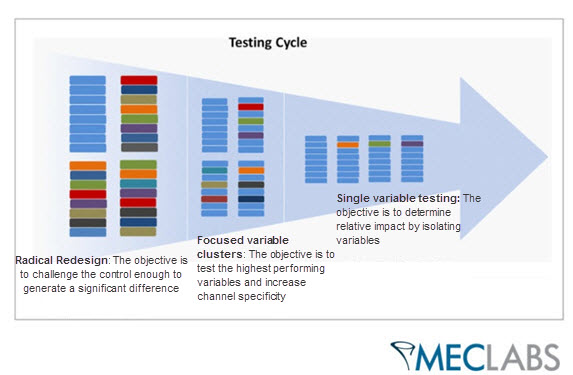Marketing Process: Managing your business leader’s testing expectations
Every Research Partner wants a lift, but we know sometimes, those lifts aren’t achievable without learning more about their customers first.
And often, our biggest lifts are associated with radical redesign tests that really shake things up on a landing page. That is because the changes are more drastic than a single-factor A/B test that allows for pinpointing discoveries.
So, how can you strike a balance between using these two approaches while still delivering results that satisfy expectations?
You can achieve this by managing your client’s or business leader’s expectations effectively.
It sounds easier said than done, but there are a few things you can do to satisfy a client’s or business leader’s needs for lifts and learnings.
Step #1. Start with radical changes that challenge the paradigm
At MECLABS, we often recommend a strategic testing cycle with radical redesign testing (multiple clusters as opposed to a single-factor A/B split) to identify any untapped potential that may exist on a Research Partner’s landing page.
However, you must make sure you are not making random changes to a page to achieve a radically different control and treatment, but are truly focused on challenging the control’s paradigms and assumptions currently being made on the page by testing with a hypothesis.
For example, Sierra Tucson, an addiction and mental health rehabilitation facility, found with a radical redesign from a landing page focused on luxury to a landing page focused on trust resulted better with its target audience. The company also generated 220% more leads with the test to boot.
Step #2. Zoom in on general areas your radical redesign test has identified as having a high potential for impacting conversion
Next, we suggest refining with variable cluster testing, also known as select clusters.
If you identify a radical shift in messaging to be effective, as Sierra Tucson did, you might next want to try different copy, different designs or different offers, just to name a few options.









